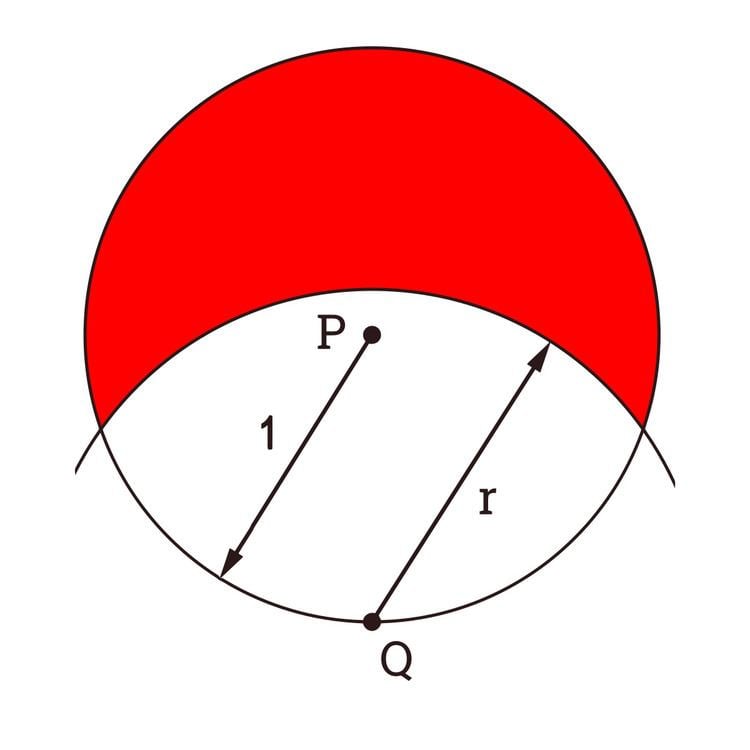 | ||
The goat problem is a problem in recreational mathematics known since the 18th century. It was first published in 1748 in England, in the yearly publication The Ladies Diary: or, the Woman’s Almanack.
Contents
Problem statement
How big must
Solution by calculating the lens area
The area reachable by the animal is in the form of a single-line symmetric lens, limited by the two circular arcs.
The area
which simplifies in case of
The equation can only be solved iteratively and results in
Solution using integration
By integrating over the right half of the lens area with
the transcendent equation
follows, with the same solution.
The goat in space
In the three-dimensional case, point
The volume of the unit sphere reachable by the animal has the form of a three-dimensional lens with differently shaped sides and defined by the two spherical caps.
The volume
which simplifies in case of
leading to a solution of
It can be demonstrated that with increasing dimensionality,
The goat and the silo
In the two-dimensional case, the question about the reachable area outside the red circle may be asked. This concerns a situation where the animal is tethered to a silo.
The area consists of a half-circle (light blue) with radius
assuming that
